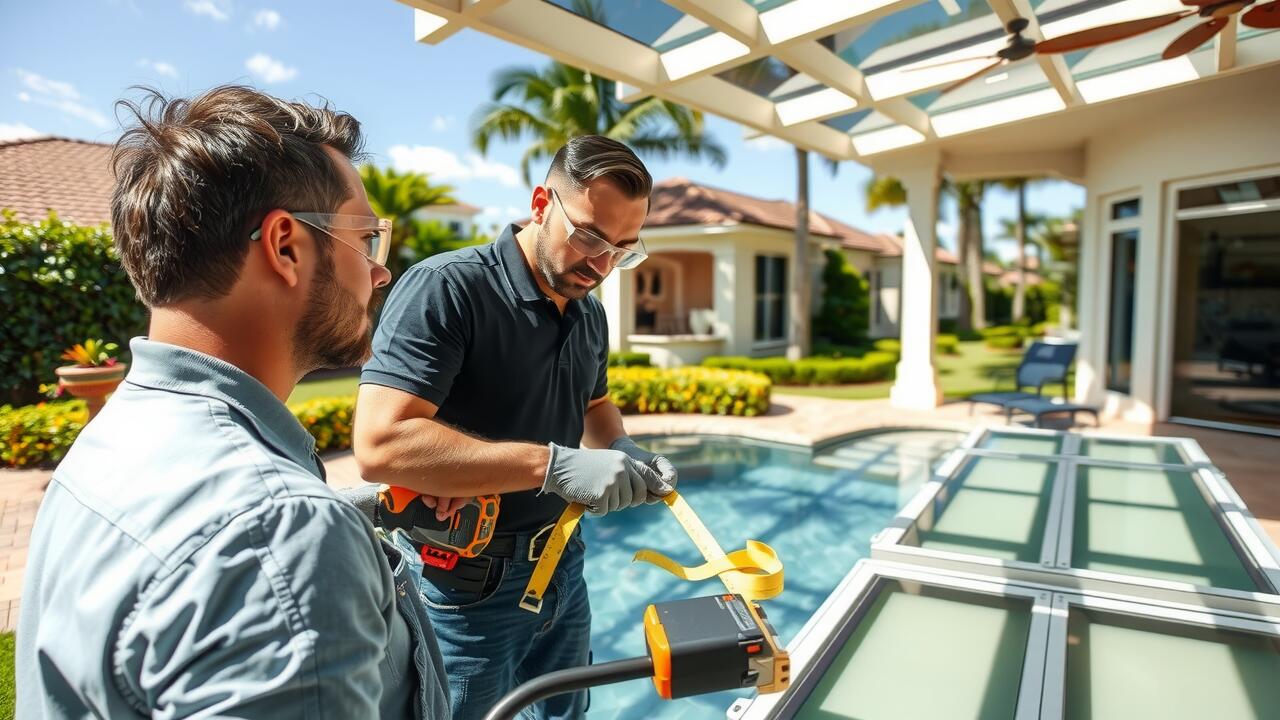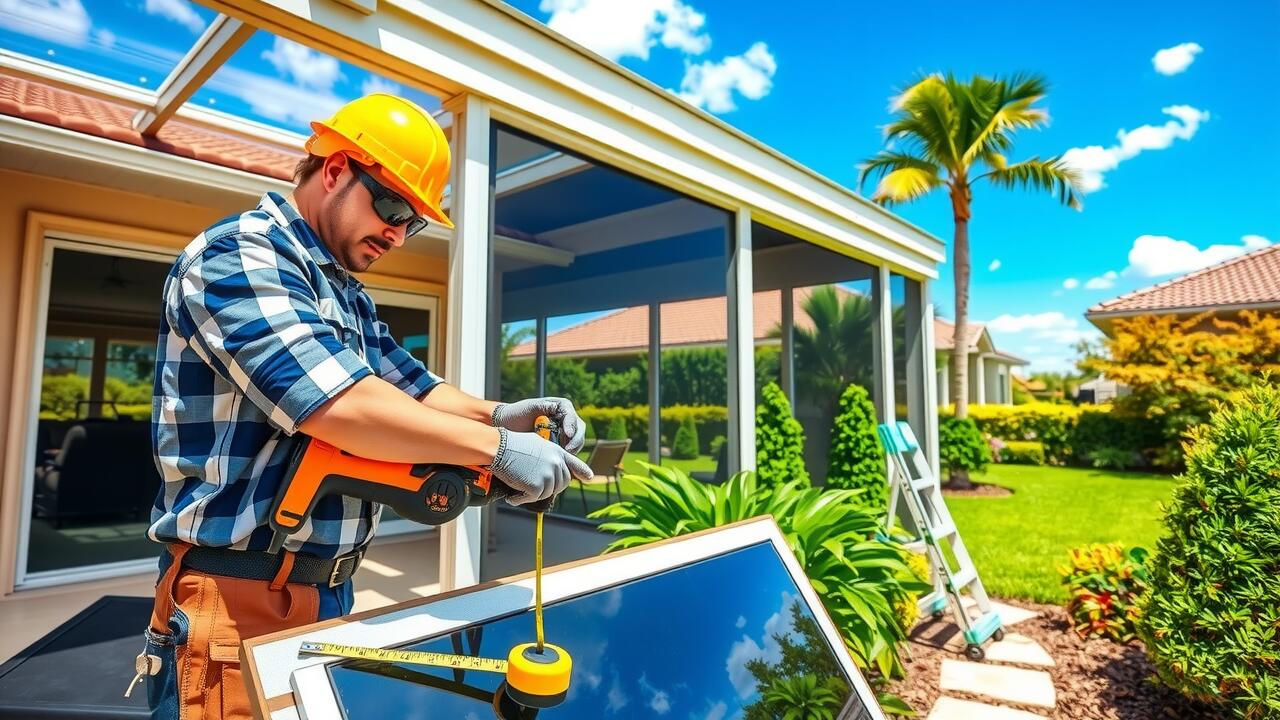
Additional Features That Affect Pricing
When planning for lanai enclosures, several additional features can significantly influence the overall cost. Custom options like decorative columns, integrated lighting, and built-in seating can add both functionality and aesthetic appeal. Installing sliding or folding glass doors instead of traditional screens increases investment but enhances the space by allowing more natural light and offering panoramic views. Each feature selected not only affects the initial price but can also enhance the enjoyment of your enclosed lanai.
Ventilation and insulation elements also play a crucial role in pricing. Proper ventilation systems are necessary to maintain a comfortable atmosphere in all seasons, and varying insulation levels can create a more energy-efficient environment. Choosing high-quality windows with energy-efficient coatings may raise costs upfront but often results in long-term savings on heating and cooling bills. Budgeting for these features ensures that the lanai enclosures fit your lifestyle and preferences while considering future maintenance expenses.
Ventilation, Insulation, and Windows
When considering lanai enclosures, ventilation plays a vital role in ensuring comfort and air quality. Proper airflow can prevent overheating and excessive humidity, which are particularly important in warmer climates. Various ventilation options are available, from operable windows to built-in fans. Choosing the right system can significantly impact both comfort levels and energy efficiency.
Insulation is equally crucial for maintaining a comfortable environment year-round. Quality insulation helps regulate indoor temperatures and can reduce energy bills. Additionally, selecting double- or triple-paned windows can further enhance energy efficiency while providing noise reduction and UV protection. Together, effective ventilation and insulation contribute to the overall performance of lanai enclosures, making them a more enjoyable space.
Seasonal Considerations
Seasonal considerations play a significant role in the overall cost of lanai enclosures. The time of year when you decide to undertake the project can influence both material availability and labor costs. During peak construction months, such as spring and summer, you may encounter higher prices due to increased demand for contractors and supplies. Conversely, scheduling your lanai enclosure project during the off-peak season, typically in the fall or winter, can offer savings as contractors may be more willing to negotiate rates.
In addition to cost savings, the local climate should also inform your timing. Harsh weather conditions can delay construction and impact the types of materials that are appropriate for your area. For instance, if you live in a region prone to heavy rain or snow, it’s vital to consider how these factors will affect the durability and insulation of your lanai enclosure. Planning ahead can help ensure a smoother project and prevent unexpected expenses related to environmental challenges.
Timing Your Project for Cost Savings
Timing plays a crucial role in managing the costs associated with lanai enclosures. Each season often presents its own set of pricing dynamics, influenced by demand, weather conditions, and material availability. Choosing to schedule the enclosure during the off-peak months can yield significant savings. Contractors may offer discounts or lower rates to fill their schedules during slower periods, making it an advantageous time for homeowners to undertake the project.
Additionally, considering local market factors can also impact costs. Regions with a high volume of similar projects may drive prices up due to increased competition among contractors. Researching when local demand surges can help you time the project effectively. Taking advantage of seasonal promotions or contractor specials can lead to further price reductions, ensuring that you obtain a high-quality lanai enclosure without overspending.
Maintenance Expenses Post-Enclosure
After enclosing a lanai, homeowners need to consider the ongoing maintenance expenses that come with the new space. Regular cleaning is essential to keep the area looking its best, which may require purchasing specific cleaning supplies or hiring professionals for more extensive work. Additionally, maintaining the structural integrity of the enclosure, such as checking seals and frames, can prevent costly repairs down the line.
Climate and weather can impact maintenance costs as well. In areas with humidity or rain, more frequent inspections may be necessary to address any signs of mold or wear. If the enclosure includes features like windows or screens, these elements may require special attention to ensure they function properly. Budgeting for routine upkeep ensures that the lanai enclosure remains a valuable and enjoyable part of the home for years to come.
Long-term Care and Upkeep Costs
Long-term care and upkeep costs associated with lanai enclosures can vary widely depending on the materials used and local climate conditions. Regular maintenance tasks may include cleaning the enclosure, checking seals and gaskets, and ensuring that any mechanical components, like fans or heating systems, are in good working order. The quality of the initial installation plays a significant role in minimizing these ongoing expenses. Investing in durable materials right from the start can lead to lower maintenance requirements down the line.
Another important consideration involves the potential need for repairs or replacements. Over time, elements like windows may become tarnished or screens could develop tears. Keeping a budget for such unexpected costs can help manage finances effectively. Moreover, seasonal changes may necessitate additional maintenance to ensure that the lanai enclosures continue to perform optimally throughout the year. Routine inspections can aid in identifying issues before they escalate, ultimately leading to greater longevity and satisfaction with the space.
FAQS
What is the average cost to enclose a lanai?
The average cost to enclose a lanai typically ranges from $5,000 to $15,000, depending on various factors such as materials, size, and additional features.
What features can increase the cost of enclosing a lanai?
Features such as ventilation systems, insulation, and high-quality windows can significantly increase the overall cost of enclosing a lanai.
Are there seasonal considerations that can affect the cost of enclosing a lanai?
Yes, timing your project during off-peak seasons can lead to cost savings as contractors may offer lower rates during fall or winter when demand is lower.
What are some ongoing maintenance expenses after enclosing a lanai?
Common maintenance expenses may include cleaning, repairs to windows or insulation, and potential replacement of any installed ventilation systems or fixtures.
How can I save on costs when enclosing my lanai?
To save on costs, consider doing the project during the off-season, choosing budget-friendly materials, and comparing quotes from multiple contractors.
